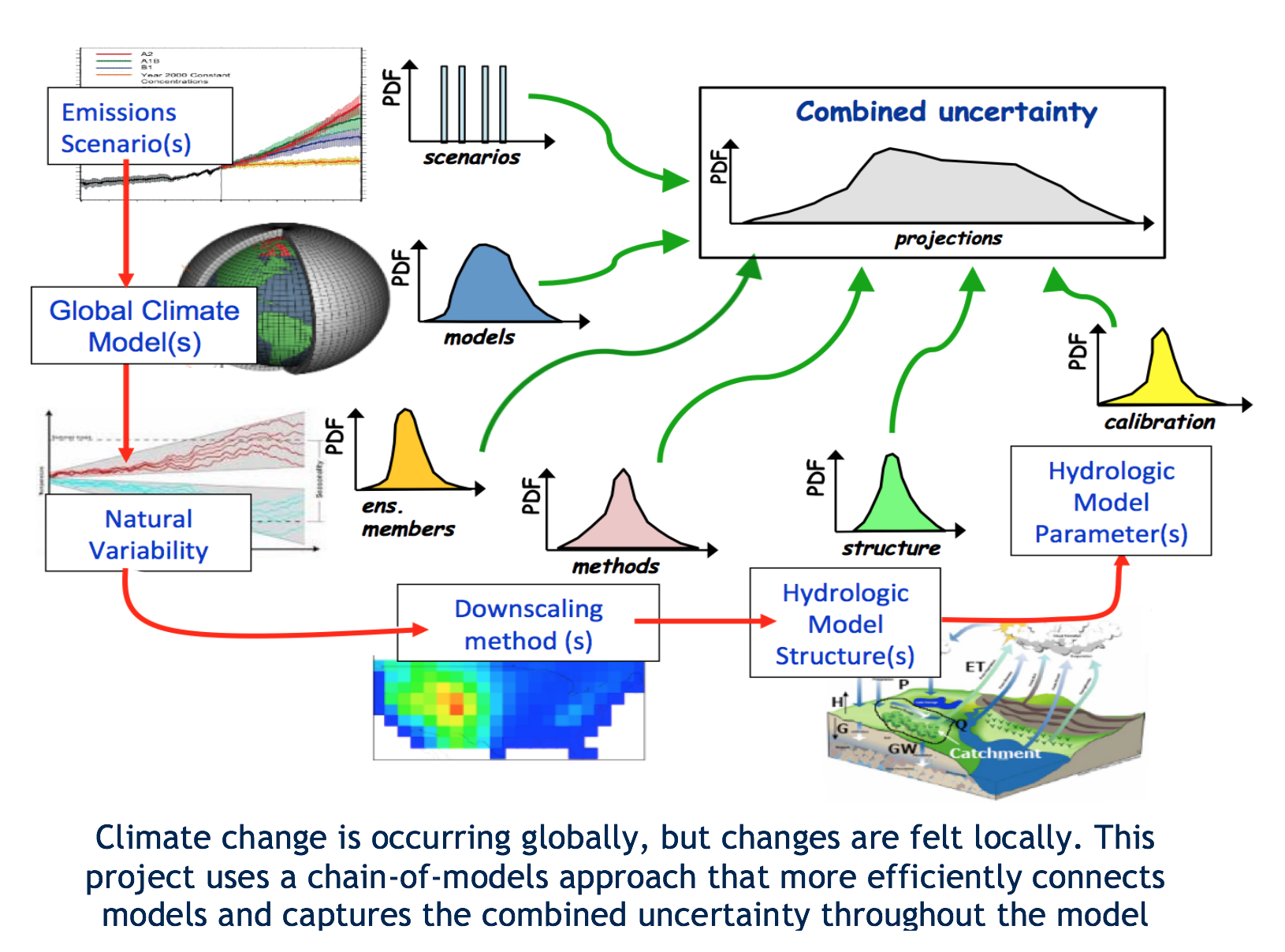The research community has made substantial scientific advances in understanding impacts of climate variability and change on water resource systems; however, the opportunities exist to improve the technical readiness and usability of climate downscaling and hydrologic modeling science to support adaptive water resources planning. The goal of this project is to increase the value of emerging science advances in climate downscaling and hydrologic modeling for water resources planning and management.
Scientists and engineers in RAL’s Hydrometeorological Applications Program at the National Center for Atmospheric Research are collaborating with NASA Goddard Space Flight Center and partners at three universities (U. of Washington, U. of Alabama, and U. of Saskatchewan) to develop more computationally efficient tools and data resources for both researchers and practitioners. With funding from NASA’s Advanced Information System Technology program, the team is working to increase the readiness of emerging technologies and science through extending capabilities of the NASA Land Information System (LIS). LIS currently provides a software framework for high performance terrestrial hydrology modeling and data assimilation used by interagency partners. This project adds a suite of modeling LIS-compatible tools and datasets that enhance its ability to evaluate future climate change impacts on water systems.
Specific work elements underway include:

NCAR: Andy Wood (PI), Ethan Gutmann (Co-I), Naoki Mizukami, Joe Hamman, Julie Vano
NASA Goddard: Christa Peters-Lidard (Co-I), Sujay Kumar, Kristine Verdin, James Geiger, Scott Rheingrover
University of Washington: Bart Nijssen (Co-I), Andrew Bennett
University of Alabama: Grey Nearing
University of Saskatchewan: Martyn Clark
Contact: Andy Wood - andywood at ucar.edu | Julie Vano – jvano at ucar.edu
NASA's Advanced Information System Technology program
Model information:
Factsheets:
2-Pager (same info as this page)
Papers: